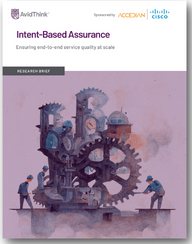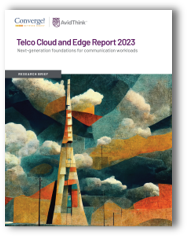(Newsletter for 2023 February was delayed to include MWC news — we hope that’s useful to you)
MWC 2023
We’re back from MWC! It was a crazy week as Jim Carroll of our media partner, Converge Digest, and I navigated the crowd of 88,500 attendees on the seven-hall show floor (plus area hotels and restaurants for breakfast, cocktails, and dinner). More crowded than 2022’s 60,000, but thankfully not the 110,000 peak-MWC numbers. As always, too many meetings and too little time, but we were happy to get a chance to see friends and colleagues from the industry in person — some of whom we hadn’t seen for a few years.
Jim’s still juggling MWC video production while he’s at OFC in San Diego this week, covering the latest in optical innovation, but check out our MWC 2023 showcase on our joint NextGenInfra.io site. More videos to come, and we thank vendors and telcos for supporting our showcase this year!
Key themes from the show: private wireless (with edge), 5G monetization (through slicing, quality on demand, with edge), Open RAN and RIC (not if, but when, and how), telco APIs (GSMA Open Gateway/CAMARA – no, not that GSMA OpenAPI gateway from 2012), hyperscaler collaboration (who’s doing what with whom), telco cloud and automation, and fair share (telcos again asking content/cloud providers for subsidies). You’ll see some of the highlights show-related announcements below in our news summary, including AWS Integrated Private Wireless, Azure Operator Nexus, Celona and DISH/JMA private wireless updates, NTT and Cisco private 5G partnership, and GSMA Open Gateway.
We had fun participating in panels on private wireless offerings by MSOs (Comcast, Qualcomm, IBM, Samsung) and conducting fireside chats at AWS Studio (private wireless with Federated Wireless, CalPoly, AWS; cloud-based converged mobile core with WG2 and MVNO Mobi). And we judged probably one of the world’s first RIC xApp/rApp competitions — VMWare’s rAppathon that showcased cool new apps). We’ll share links when the recordings become available.
As always, feel free to contact us at [email protected] if you are interested in participating or sponsoring upcoming sites: the new middle mile, SD-WAN/SASE, private mobile networks, disaggregated and cloud-native networks, and infrastructure security.
On with the news!
Private Networks
Cisco teams with NTT on private 5G
Cisco scored a private network deal with Japan-based NTT in which the two companies will create a managed private 5G platform using Intel hardware to enable customers to integrate private 5G into their existing LAN, WAN, and cloud infrastructure. NTT will provide the network infrastructure design, deployment, use case development, and devices, and Cisco will provide its private 5G platform.
Cox teams with Intel and Future Technologies on private networks
Cox Communications teamed with Intel and Future Technologies to design and deploy managed private networks for enterprise customers. Intel brings its cloud-to-edge technologies, Cox contributes its edge infrastructure and fiber assets, and Future Technologies will use its system integration skills to bring the offering together. Cox and its partners are now installing a private network that spans eight city blocks in Las Vegas’ Fremont District.
AWS aims to simplify private networks
Amazon Web Services (AWS) launched a new offering aimed at helping enterprises with private networks. The new product, Integrated Private Wireless on AWS, is an expansion of the company’s existing private wireless network offering launched last year. That product (AWS Private 5G) primarily targeted smaller network operations using unlicensed spectrum. This new product is intended for enterprise customers that want to use licensed spectrum and build a bigger network. T-Mobile, Deutsche Telekom, KDDI, Orange, and Telefonica in Spain are the first operators to support Integrated Private Wireless on AWS.
Vodafone unveils private 5G network prototype intended for small businesses
Vodafone has created a prototype 5G network that uses a credit card-sized Raspberry Pi 4 computer and a small silicon chipset to make it easy and affordable for small businesses and households to deploy private networks. The prototype is about the size and cost of a Wi-Fi router and can extend the coverage of a public network to remote locations. Vodafone believes 22 million small and medium-sized businesses across Europe could benefit from this type of private network.
Dish and JMA Wireless built a private wireless network for the Super Bowl
Dish Network partnered with equipment vendor JMA Wireless and integrator CP Communications to build a private wireless network for the State Farm Stadium in Glendale, Arizona, that was used by broadcaster Fox for Super Bowl LVII. JMA designed and built the network using JMA radios. Dish provided the 3.5 GHz CBRS spectrum, and CP Communications served as the integrator. During the Super Bowl, Fox used the network to communicate with stage managers, camera operators, and others. Prior to having the private network, Fox had to rely on unlicensed spectrum and walkie-talkies for its communications during broadcasts.
Celona expands its private wireless gear to include more spectrum bands
Celona is expanding its portfolio of private wireless products to support more spectrum bands beyond CBRS n48, including introducing a new 5G New Radio (NR) private wireless equipment. The company plans to offer a converged 4G/5G core and is building gear that supports spectrum in bands n77 and n78 (with n79 later in 2023) for private wireless networks in the U.K., Europe, Japan, and Korea.
6G
South Korea aims to be first with 6G
The South Korean government is setting the stage to be a 6G leader. The telecom operator said that it is targeting 2028 to launch 6G and will have pre-6G technologies ready by 2026. Lee Jong-ho, Minister for Science and ICT, unveiled the K-Network 2030 plan in February and called for South Korean tech firms to lead the way in developing 6G technologies and software-based networks. The plan also calls on South Korean firms to demonstrate pre-6G technology in 2026 in areas such as extreme MIMO technology in upper mid-spectrum bands.
5G
Comcast picks Nokia for 5G SA gear
Cable operator Comcast selected Nokia’s standalone 5G (SA) core network software to deploy over the company’s CBRS and 600 MHz spectrum. The goal of the deployment is to improve coverage and also help with capacity in dense, high-traffic areas. Nokia also will provide consulting services and operations software. The two companies said they are currently conducting field trials with the SA gear. Comcast operates an MVNO called Xfinity Mobile that uses Verizon’s network. The 5G service that Comcast will deploy will also allow the company to reduce the costs that it pays to Verizon for its network usage.
T-Mobile for Business will use Cisco Meraki gateways for FWA
Cisco revealed that T-Mobile for Business would use Cisco Meraki MG51 and MG51E cellular gateways with Meraki’s cloud-based suite of SD-WAN solutions to provide fixed wireless access to its enterprise clients. The gateways support connectivity and zero-touch provisioning and do not require on-site installation. They also come with Cisco Meraki’s network security solutions, including VPN, firewall, content filtering, and more. They support a maximum throughput of 2 Gbps downlink and 300 Mbps uplink.
Cisco worked with T-Mobile to merge its 5G and 4G cores
Cisco helped T-Mobile launch its new cloud-native 5G core gateway and combined its legacy 4G core with its new standalone (SA) and non-standalone (NSA) 5G cores. The result is that T-Mobile can now simplify network functions across the cloud, edge, and data centers to reduce operational lifecycle management, according to both Cisco and T-Mobile. By merging the cores, T-Mobile can simplify its network and improve efficiency, which results in faster speeds for customers. The new core is also more distributed, leading to lower latency and advancing capabilities like edge computing.
Orange Group launches standalone 5G in Spain
Orange Group launched standalone 5G (SA) in four Spanish cities: Barcelona, Madrid, Seville, and Valencia. The operator said that it would roll out SA to more cities during the rest of the year. Orange worked with Ericsson on the network in Spain and will use the vendor’s SA gear in its network in Belgium, Luxembourg, and Poland. Orange said it would use Nokia’s SA equipment in its network in France and Slovakia. But Orange hasn’t revealed any timeline for when it will expand SA to markets outside Spain.
Bermuda operator plans to build a cloud-native 5G network
Paradise Mobile, a Bermuda-based operator, plans to launch a 4G and 5G network using equipment from Mavenir. The company has 800MHz worth of spectrum, including 100MHz in the 3.7 GHz band. Mavenir will supply the converged core, a billing and management platform, and 4G and 5G radios through the company’s OpenBeam portfolio. In addition, Paradise Mobile’s CEO said an unnamed webscale cloud computing company would host Paradise Mobile’s network. Paradise Mobile said it would initially offer smartphone service but also hopes to eventually offer more 5G applications and services.
Swisscom plans to transition core network to SA
Swisscom will upgrade its network to standalone 5G with help from Amazon Web Services (AWS). However, the company is currently doing just fine serving its customers using non-standalone 5G (NSA). Instead of just shifting its current software to AWS, Swisscom said it plans to transform its network to cloud-native and run its IT services and all its network functions in a different way. Ultimately, that means operating in a hybrid cloud environment and tapping its own private cloud as well as the AWS public cloud.
Open APIs in the spotlight at MWC
One hot trend at Mobile World Congress 2023 this month was open APIs. Everyone wants them, and the GSMA is trying to organize the effort with its Open Gateway APIs initiative, described as a framework of universal network Application Programmable Interfaces (APIs) designed to provide universal access to operator networks for developers. Open Gateway APIs are based on work by CAMARA, another GSMA/Linux Foundation API effort launched last year. At MWC, T-Mobile and Deutsche Telekom also launched T-DevEdge, which is also designed to make it easy and simple for developers to create applications.
Microsoft introduces Azure Operator Nexus
Microsoft announced the public preview of Azure Operator Nexus, an expansion of the Azure Operator Distributed Services (AODS) private preview. The platform is a hybrid cloud service designed for network operators to run network functions such as packet core, vRAN, subscriber data management, and billing policy. It utilizes key Microsoft technologies such as Mariner Linux, Hybrid AKS, and Arc while also leveraging Microsoft Services for security, lifecycle management, observability, DevOps, and automation. AT&T has already used the platform (which came from last year’s outsourcing of AT&T’s 5G packet core to Microsoft), and Microsoft is currently working with operators for potential deployments worldwide.
Edge
Verizon demonstrates an edge use case with AWS
Verizon teamed with Amazon Web Services (AWS) to showcase different proof of concepts using AWS edge services and dynamic Quality of Service (QOS) from Verizon. By combining these elements, Verizon said it could provide application developers with APIs through the Verizon or AWS API portals so they can build performance-sensitive applications that map to and operate from the closest AWS Wavelength Zone. One customer that is participating in the proof of concept is Holo-Light, which creates augmented and virtual reality applications for enterprises.
Open RAN
Is Open RAN more energy efficient than traditional RAN?
The Next Generation Mobile Networks (NGMN) Alliance said during its press briefing at Mobile World Congress that it believes that it’s only a matter of time before open RAN is shown to be more energy efficient than traditional RAN. Speaking to the press, Laurent Leboucher, Orange Group CTO and a board member of NGMBN, said that the group believes that they will be able to demonstrate that Open RAN-compliant technologies will be either on par or even better (in terms of energy efficiencies) than traditional RAN. The reason, he said, is because there’s a possibility of pooling compute resources to save energy and the emergence of “smart algorithms” that will enable a cloud-based network to be configured in such as to optimize energy consumption.
Mavenir adds Cohere’s spectrum multiplier to its RIC
Mavenir is working with Cohere Technologies and is able to run Cohere’s Universal Spectrum Multiplier as a software application on Mavenir’s just-launched RAN Intelligent Controller (RIC), a platform hosted either at the central facility or closer to mobile sites. This RIC innovation is considered a way to bring interoperability into mobile networks. Cohere’s technology can be integrated with Mavenir’s RAN software as well, but Mavenir has not announced any plans to do this. This partnership between Cohere and Mavenir is likely attractive to companies like Dish Network.
Dish Network wants NTIA to focus on security, integration with Open RAN
Dish Network recently told the National Telecommunications and Information Administration (NTIA) that it believes the organization should focus its $1.5 billion Wireless Innovation Fund on two key areas: security and system integration for Open RAN. The company said that if the NTIA focuses on those two areas, it believes the U.S. can lead the way in open RAN products/systems and streamline Open RAN adoption and use while lowering the entry barriers for open RAN vendors.
Cloud
AWS releases Telco Network Builder to simplify cloud-native for telcos
Amazon Web Services (AWS) is trying to make it easier for service providers to move to cloud-native networks by launching Telco Network Builder, a managed service that it says helps operators simplify their operations and accelerate time to market for rolling out a cloud-based network architecture. AWS doesn’t require any upfront fees for Telco Network Builder, and instead, customers only pay for the AWS services used to manage their network. Telco Network Builder acts as a middleman between existing OSS/BSS and the network functions and exposes the application protocol interfaces (APIs) for the orchestration system.
Juniper sees record performance from enterprise biz in Q4
It was another strong quarter for Juniper Networks, which saw its enterprise business grow 32% year-over-year in Q4 2022, and its cloud business jumped more than 14%. However, Juniper’s service provider segment continues to be the weak link for the company. This division declined 8% year over year in Q4. Juniper’s overall revenue for Q4 was $1.45 billion, an increase of 11% year over year and up 2% from Q3. For the full fiscal year, the company reported revenues of $5.3 billion, up 12% from the prior year. In addition, Juniper’s capital expenditures for the quarter were $31.7 million. Juniper also said that it has $2 billion in backlog orders from 2022, which is higher than ever. However, Juniper CEO Rami Rahim told investors that he expected buying to be diminished in the first half of 2023 as orders placed in the previous quarter to now be shipping to customers.
AWS and Google Cloud quarterly results hint at slowing revenue growth
Amazon Web Services (AWS) and Google Cloud quarterly results confirmed what Microsoft Azure hinted in January —that revenue growth rates at major cloud providers are slowing. AWS reported cloud revenue of $21.4 billion, which was a 20% year-over-year increase, and Google Cloud reported revenue of a little over $7.3 billion for the quarter, which was a 32% increase in revenue. However, both AWS and Google Cloud fell short of consensus estimates. AWS, meanwhile, posted an operating income for the quarter of $5.2 billion, which was lower than the $5.3 billion reported in the same quarter in the previous year. Google, meanwhile, reported an operating loss of $480 million, which was far lower than the $890 million operating loss it reported in the same quarter in 2021.
SD-WAN
Aryaka aims to add 27 new POPs in 21 countries
Aryaka wants to boost its secure access service edge (SASE) and SD-WAN footprint by adding 27 new POPs in 21 countries over the next few years. The company told SilverLinings that Aryaka’s goal is to have enough global POPs to deliver fast, reliable, and secure cloud access from any location in the world. The company currently has more than 40 POPs, and it will add POPs where it sees the most regional demand. Aryaka said it would add 10 POPs in North America and nine in Europe. It is also planning to build five POPs in Asia and one each in Australia, New Zealand, and South America.
Cisco enhances its SD-WAN portfolio
Cisco has refreshed its SD-WAN product portfolio and introduced a new Catalyst 8500 edge platform model to establish itself as a leader in the SD-WAN market, according to Mauricio Sanchez, an analyst at Dell’Oro Group. Although Cisco is already considered a major SD-WAN player, it wants customers to migrate to the new Catalyst 8500 series and sunset its legacy Integrated Service Router (ISR) product suite. Cisco plans to swap out the revenue engine that has been the ISR with the Catalyst in the next 18 months, which is a much more modern architecture.
Windstream teams with Cato Networks on an SSE offering
Windstream Enterprise is working with Cato Networks to offer a simplified security service edge (SSE). SSE is referred to as a subset of secure access service edge (SASE), and Windstream says that while SASE secures the network by combining SD-WAN with security, SSE delivers immediate security protection to the network and its users. The two companies are working together so customers don’t have to try to navigate different systems and can purchase an SSE package that includes a rich set of security features.
AT&T’s disaggregated network strategy helped it establish SD-WAN leadership
AT&T’s early decision to pursue a disaggregated network strategy helped it break out as a leader in SD-WAN when enterprises pivoted to remote working during the Covid-19 pandemic. AT&T was an early advocate for network disaggregation and started collaborating with silicon providers like Broadcom and other ecosystem partners to create a universal CPE. It launched the first version of that CPE in 2016, and that move gave AT&T an advantage when it came to offering SD-WAN.
Wrapping Up
And that wraps it up for February. We’ll see you back here next month — the March newsletter will be on time. Don’t forget to check out MWC 2023 showcase in the meantime!
The AvidThink team












